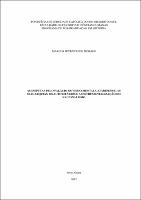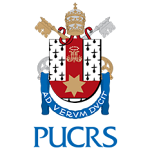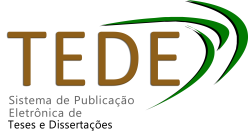| Share record |


|
Please use this identifier to cite or link to this item:
https://tede2.pucrs.br/tede2/handle/tede/2434Full metadata record
| DC Field | Value | Language |
|---|---|---|
| dc.creator | Moraes, Marcos Juvencio de | - |
| dc.creator.Lattes | http://buscatextual.cnpq.br/buscatextual/visualizacv.do?id=K4596977T8 | por |
| dc.contributor.advisor1 | Gertz, René Ernaini | - |
| dc.contributor.advisor1Lattes | http://buscatextual.cnpq.br/buscatextual/visualizacv.do?id=K4788604P5 | por |
| dc.date.accessioned | 2015-04-14T13:47:46Z | - |
| dc.date.available | 2012-09-13 | - |
| dc.date.issued | 2012-08-22 | - |
| dc.identifier.citation | MORAES, Marcos Juvencio de. As disputas pelo palácio governamental catarinense : as oligarquias, os autoritários e a instrumentalização do nacionalismo. 2012. 196 f. Dissertação (Mestrado em História) - Pontifícia Universidade Católica do Rio Grande do Sul, Porto Alegre, 2012. | por |
| dc.identifier.uri | http://tede2.pucrs.br/tede2/handle/tede/2434 | - |
| dc.description.resumo | Este trabalho estuda as relações político-econômico-culturais das elites de Santa Catarina. Nossa investigação perpassa a Primeira República, período em que houve a formação de um emaranhado complexo de relações políticas, composto por interesses oligárquicos em busca da conquista do poder estadual. Ao adentrarmos na década de 1930, percebemos uma nova forma de administração, composta principalmente pelo autoritarismo de Estado. E por fim, abordamos o Estado Novo, onde se recorre à nacionalização para construir novos padrões culturais, intimamente ligados aos interesses políticos. O fio-condutor que interliga os três períodos é o projeto de nacionalização da oligarquia Ramos. Foi iniciado em 1911, pelo patriarca Vidal Ramos, reconfigurado em 1930 (período em que dois Interventores do Rio Grande do Sul governaram Santa Catarina), e reinterpretado e intensificado no Estado Novo, com Nereu Ramos. Veremos que a oligarquia Ramos era representante do latifúndio, da etnia luso-brasileira e do nacionalismo, projeto utilizado para enfraquecer os inimigos políticos germânico-industriais. Além de tudo, constataremos que as administrações dos primeiros Interventores e a instalação do autoritarismo foram indispensáveis para a consolidação do projeto nacionalista. This paper studies the political-economic-cultural relationships of the Santa Catarina s elites. Our investigation pervades the First Republic, the period in which there was the formation of a complex tangle of political relationships, composed by oligarchic interests in pursuit of the conquest of state power. When we enter the 1930s, we see a new form of administration, composed primarily of state authoritarianism. Finally, we address the Estado Novo, which uses nationalization to build new cultural patterns, closely linked to political interests. The wire conductor that connects the three periods is the project of nationalization of the Ramos oligarchy. It was started in 1911 by patriarch, Vidal Ramos, it was reconfigured in 1930 (period in which two intervenors of Rio Grande do Sul ruled Santa Catarina) and it was reinterpreted and it was intensified during the Estado Novo, with Nereus Ramos. We will see that Ramos oligarchy was representative of the landowners, of the Luso-Brazilian ethnicity and of the nationalism, project used to weaken the German industrial political enemies. Furthermore, we find that the administrations of the first intervenors and the installation of authoritarianism were indispensable for the consolidation of the nationalist project | por |
| dc.description.abstract | This paper studies the political-economic-cultural relationships of the Santa Catarina s elites. Our investigation pervades the First Republic, the period in which there was the formation of a complex tangle of political relationships, composed by oligarchic interests in pursuit of the conquest of state power. When we enter the 1930s, we see a new form of administration, composed primarily of state authoritarianism. Finally, we address the Estado Novo, which uses nationalization to build new cultural patterns, closely linked to political interests. The wire conductor that connects the three periods is the project of nationalization of the Ramos oligarchy. It was started in 1911 by patriarch, Vidal Ramos, it was reconfigured in 1930 (period in which two intervenors of Rio Grande do Sul ruled Santa Catarina) and it was reinterpreted and it was intensified during the Estado Novo, with Nereus Ramos. We will see that Ramos oligarchy was representative of the landowners, of the Luso-Brazilian ethnicity and of the nationalism, project used to weaken the German industrial political enemies. Furthermore, we find that the administrations of the first intervenors and the installation of authoritarianism were indispensable for the consolidation of the nationalist project | eng |
| dc.description.provenance | Made available in DSpace on 2015-04-14T13:47:46Z (GMT). No. of bitstreams: 1 441362.pdf: 1902525 bytes, checksum: 36af7aa27f2be7a9cc15f87d6d440513 (MD5) Previous issue date: 2012-08-22 | eng |
| dc.format | application/pdf | por |
| dc.thumbnail.url | http://tede2.pucrs.br:80/tede2/retrieve/10660/441362.pdf.jpg | * |
| dc.language | por | por |
| dc.publisher | Pontifícia Universidade Católica do Rio Grande do Sul | por |
| dc.publisher.department | Faculdade de Filosofia e Ciências Humanas | por |
| dc.publisher.country | BR | por |
| dc.publisher.initials | PUCRS | por |
| dc.publisher.program | Programa de Pós-Graduação em História | por |
| dc.rights | Acesso Aberto | por |
| dc.subject | SANTA CATARINA - HISTÓRIA | por |
| dc.subject | OLIGARQUIA - SANTA CATARINA | por |
| dc.subject | SANTA CATARINA - POLÍTICA E GOVERNO | por |
| dc.subject.cnpq | CNPQ::CIENCIAS HUMANAS::HISTORIA | por |
| dc.title | As disputas pelo palácio governamental catarinense : as oligarquias, os autoritários e a instrumentalização do nacionalismo | por |
| dc.type | Dissertação | por |
| Appears in Collections: | Programa de Pós-Graduação em História | |
Files in This Item:
| File | Description | Size | Format | |
|---|---|---|---|---|
| 441362.pdf | Texto Completo | 1.86 MB | Adobe PDF |  Download/Open Preview |
Items in DSpace are protected by copyright, with all rights reserved, unless otherwise indicated.




